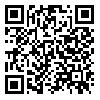Tue, Dec 2, 2025
[Archive]
Volume 10, Issue 28 (2018)
JMED 2018, 10(28): 39-52 |
Back to browse issues page
Download citation:
BibTeX | RIS | EndNote | Medlars | ProCite | Reference Manager | RefWorks
Send citation to:



BibTeX | RIS | EndNote | Medlars | ProCite | Reference Manager | RefWorks
Send citation to:
Ramazani A, Ghahramani M, Pardakhtchi M H, Zaker Salehi G. Strategic Analysis of International Scientific Collaboration of Iranian Top Universities from their Faculty perspective, Using FBWM. JMED 2018; 10 (28) :39-52
URL: http://edujournal.zums.ac.ir/article-1-1019-en.html
URL: http://edujournal.zums.ac.ir/article-1-1019-en.html
1- Department of Educational Administration, Shahid Beheshti University, Tehran, Iran , a_ramezani@sbu.ac.ir
2- Department of Educational Administration, Shahid Beheshti University, Tehran, Iran
3- Institute for Research and Planning in Higher Education, Tehran, Iran.
2- Department of Educational Administration, Shahid Beheshti University, Tehran, Iran
3- Institute for Research and Planning in Higher Education, Tehran, Iran.
Abstract: (15326 Views)
Background and Objective: Asymmetric distribution of knowledge and technology in globalization era, and the necessity of global interactions for universities have led them to enter into international scientific collaboration (ISC) and strategic evaluation of status quo is required for effective participation in it. Therefore, the aim of this study was to evaluate the ISC of top Iranian universities using SWOT analysis.
Materials and Methods: This was an applied descriptive survey. 432 faculty members of the top 12 universities were selected through a stratified sampling. The data-collection tool was a researcher-made questionnaire whose content validity was confirmed by experts and counterparts and its reliability was calculated using Cronbach's alpha equal to 0.816. Data analyzed through Fuzzy BWM.
Result: The most important strengths included increasing presence of researchers at international conferences, and the existence of suitable international development platforms in universities; weaknesses included inadequacy of faculty annual grants, and university administrators' lack of knowledge about ISC; opportunities included the youthfulness of Iran's population, the lifting of some sanctions against Iran and international community's new appetence to acceptance of Iran in international academic consortia and finally important threats included the economic downturn in most countries; lack of political platform for ISC and the spread of Islam and Iran phobia around the world.
Conclusion: International Scientific Collaboration is required for meeting many objectives of the Iran development plans, and is strongly influenced by the specific cultural, political, religious and international conditions of Iran. Top universities must meet the international academic standards and audit the requirements of international community.
Materials and Methods: This was an applied descriptive survey. 432 faculty members of the top 12 universities were selected through a stratified sampling. The data-collection tool was a researcher-made questionnaire whose content validity was confirmed by experts and counterparts and its reliability was calculated using Cronbach's alpha equal to 0.816. Data analyzed through Fuzzy BWM.
Result: The most important strengths included increasing presence of researchers at international conferences, and the existence of suitable international development platforms in universities; weaknesses included inadequacy of faculty annual grants, and university administrators' lack of knowledge about ISC; opportunities included the youthfulness of Iran's population, the lifting of some sanctions against Iran and international community's new appetence to acceptance of Iran in international academic consortia and finally important threats included the economic downturn in most countries; lack of political platform for ISC and the spread of Islam and Iran phobia around the world.
Conclusion: International Scientific Collaboration is required for meeting many objectives of the Iran development plans, and is strongly influenced by the specific cultural, political, religious and international conditions of Iran. Top universities must meet the international academic standards and audit the requirements of international community.
Keywords: SWOT Analysis, International Scientific Collaboration, Top Universities of Iran, Fuzzy BWM.
Article Type : Orginal Research |
Subject:
Education
Received: 2018/02/5 | Accepted: 2018/03/1 | Published: 2018/05/12
Received: 2018/02/5 | Accepted: 2018/03/1 | Published: 2018/05/12
Send email to the article author
| Rights and permissions | |
 |
This work is licensed under a Creative Commons Attribution-NonCommercial 4.0 International License. |




